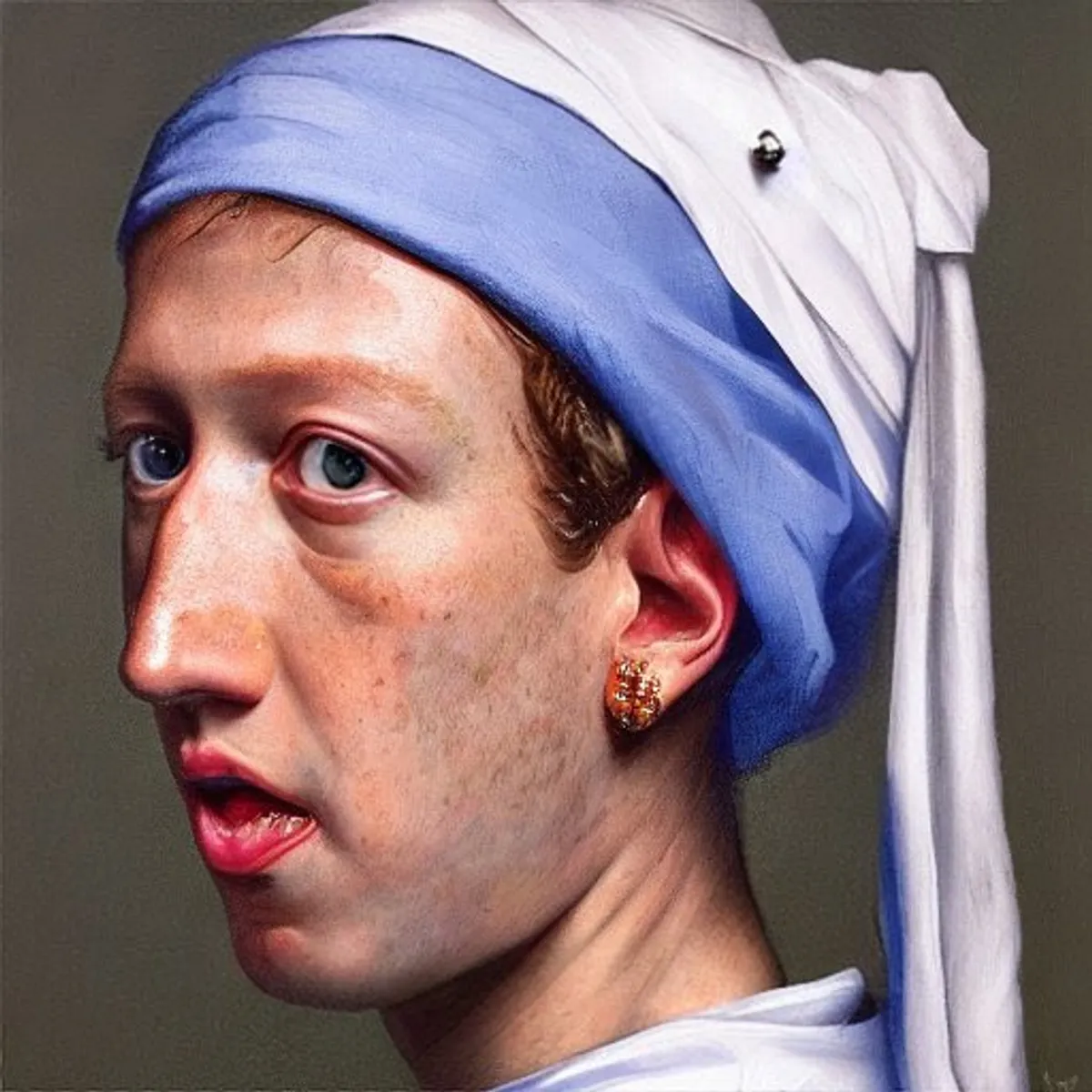Newsletter Issue 7

Mark Zuckerberg as the girl with the pearl earring generated using Stable Diffusion
Summary and Reflection 🤔
This week I wrote a post announcing my new personal website.
I also wrote a post on analysis of algorithms for the algorithms-boot-camp.
This post focuses on the different ways of measuring algorithms theoretically and on actual hardware.
For some “brain food,” I share one of my favorite talks, “You and your Research” by Richard Hamming, and an announcement of a new Open Source image generation AI called “Stable Diffusion.”
Updates 🆕
new website on logseq hugo
I launched a “beta” version of my website that’s built almost entirely in Logseq using the Hugo Plugin.
I write all my posts in Logseq and then push a button to export them to files compatible with the Hugo static site generator.
I’m still migrating my old pages and customizing them, but I’m pleased with the results.
The site,logseq graph, and AWS CDK deployment tooling is on Github.
abdul bari algorithms
I’m going through the excellent Abdul Bari Algorithms Course on Youtube
See my notes on Part 1 of his course here
I wrote a post on posterior vs a priori analysis of algorithms
As I watch various courses, I’ll link to the concepts on the algorithms boot camp page as a learning roadmap
Productivity Toolkit 🛠️
In this section, I’ll share a productivity tip I’ve learned recently.
five-minute-journal
The five-minute journal is one of the best places to start with journaling and productivity.
The idea is you spend five minutes journaling every morning.
Here are the prompts I use:
What Am I Grateful for?
What Would Make Today Great?
What Am I Worried About?
Brain Food 🧠
In this section, I’ll share some interesting articles and “food for thought”
Quote
you and your research
My notes on this talk from 1986 about what it takes to do Nobel prize-level work.
Richard Hamming was a mathematician and computer scientist who worked on calculating machines for the Manhattan Project and Bell Labs.
He worked alongside some of the most outstanding scientists in history, including Von Neumann, Feynman, Fermi, and more.
In his talk, You and Your Research (1986), he reflects on why some scientists he worked with, like Claude Shannon, went on to do Nobel Prize-level work, and others in the cubicles right next to them were forgotten.
My favorite piece of advice is his urge to focus on important problems above all else and be honest with yourself if what you’re working on is worthwhile.
If you do not work on an important problem, it’s unlikely you’ll do important work. It’s perfectly obvious.
He has a story where he would eat lunch with other scientists from different fields at Bell Labs:
I started asking, “What are the important problems of your field?“ And after a week or so, “What important problems are you working on?” And after some more time I came in one day and said, “If what you are doing is not important, and if you don’t think it is going to lead to something important, why are you at Bell Labs working on it?“ I wasn’t welcomed after that; I had to find somebody else to eat with!
When pressed, many of his fellow scientists admitted they didn’t believe the problems they were working on were significant.
Great scientists have thought through, in a careful way, a number of important problems in their field, and they keep an eye on wondering how to attack
I highly recommend reading his full talk if you consider yourself a scientist or researcher.
Link of the week - Stable Diffusion
AI image generation is advancing incredibly rapidly. You describe the image you want to AI programs, and they will generate an original idea.
The public is just beginning to see this technology, and its effects will be huge. You won’t be able to believe anything you see soon. And you’ll be seeing shocking stuff, I’m sure.
The AI art generation is getting so good that it will replace a lot of concept art, game art, and movie art.
There is a lot of controversy around having something that can automate the work of human artists, especially since the AI was trained on the work of professional artists.
I was very impressed when I first saw DALL-E, but I was disappointed too.
It was unique but censored, pay-per-use, not open source, impossible to run locally or modify, etc.
Stability AI is releasing an open-source AI image generation program called “Stable Diffusion” that can run on midrange PCs and M1 Macs.
Stable Diffusion will be massive because people can now run powerful AI image generation on their hardware and do whatever they want. We will see a lot of new tools for artists built around this.
I’m sure we’ll see a lot of crazy stuff with this soon, but I can’t wait for the creative potential this unlocks.
Outro
Check out the newsletter-roadmap to see what I have in mind for future issues. Let me know on twitter @bsunter

